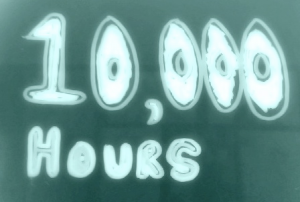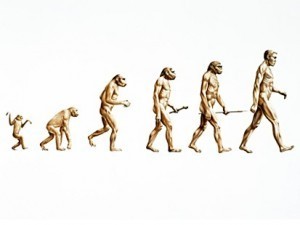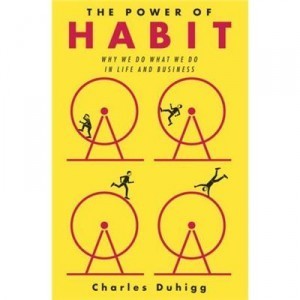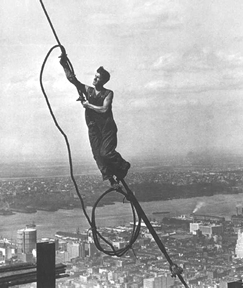Daniel Coyle's Blog, page 17
April 10, 2012
How to Make Learning Addictive
 I'm about the ten-millionth person to make this point, but wouldn't it be great if we could learn everything as fast and efficiently as we learn video games? If we could learn to play violin or write computer code as quickly as we learn Madden or Halo?
I'm about the ten-millionth person to make this point, but wouldn't it be great if we could learn everything as fast and efficiently as we learn video games? If we could learn to play violin or write computer code as quickly as we learn Madden or Halo?
With that in mind, here's a video-game term that might apply: replay value. It refers to how much a user wants to play a game over and over. You know the feeling — the irresistible itch to repeat a game just one more time, and just one more time after that (Angry Birds, anybody?).
Though the motivation feels internal, in fact replay value doesn't come from the user; it comes from the design of the game itself. Games that provide lots of roles, lots of paths, lots of possible outcomes have high replay value — people love to play them, and get addicted. Games with few roles, few paths, few outcomes have low replay value; people play them once and then quit.
If you look at the practice routines of high performers, you'll find they have high replay value. They are designed in such a way that you naturally want to do them again, and again, and again. For example:
Bubba Watson, who won Sunday's Masters golf tournament with an "impossible" curving shot from the woods, learned to control the ball by hitting a small plastic ball in his yard when he was a small boy. The game young Bubba invented was to see if he could go around his house clockwise, then turn around and do it counterclockwise.
Earl Scruggs, the greatest banjo player who ever lived, practiced his sense of timing by playing with his brothers. The game went like this: the brothers would all start a song, then walk off in different directions, still playing. At the end of the song they'd come together to see if they'd stayed on time. Then do it again. And again.
Pretty much any skateboarding or snowboarding practice has a high replay value: think of how the sides of a half-pipe or ramp literally funnel the athlete into the next move. No wonder they learn so fast: the replay value in most gravity sports is off the charts.
The larger pattern here is that practices with high replay value tend to be practices the learners design themselves. One of the reason the learners can't help but repeat them over and over is that they have a sense of ownership and investment — they're not robots executing someone else's drill; they're players immersed in their own fun, addictive game.
Which leads to an interesting question: how else can we raise the replay value of our practice? Here are a few ideas.
1. Keep score — and I'm not talking about on the scoreboard. Pick exactly what you want to learn, and count it, or time it. Musicians could count the number of times they play a passage perfectly; soccer players could count number of perfect passes; math students could count the time it takes to do the multiplication table — just as they do in addictive math-learning apps like Math Racer and Kid Calc.
2. Provide multiple roles. Basically, switch places a lot. Everybody should periodically trade positions, to experience it from a new angle and come to a deeper (and more addictive) understanding. Batter becomes pitcher; salesperson becomes client; musician becomes listener.
3. Set near/far goals. The most effective goals have two levels, one near and one far. The near goal is today's immediate goal; the far goal is an ideal performance far in the future which serves as a north star. Putting both goals out there (as video games do so well) add a dose of sugar to the practice process, and keeps people coming back for more.
How else can you make your practice more addictive?
April 4, 2012
Q: What Stands Between You and Better Performance? (A: You)
 Call it "Flow" or "The Zone" — we've all had moments when it all comes together: when we can do no wrong, when our performance jumps to a higher level. The old cliche is that we go unconscious; our normal selves vanish and we're replaced by someone better.
Call it "Flow" or "The Zone" — we've all had moments when it all comes together: when we can do no wrong, when our performance jumps to a higher level. The old cliche is that we go unconscious; our normal selves vanish and we're replaced by someone better.
Now, science is showing us the useful truth beneath that cliche. Higher performance is not about addition; it's about subtraction — specifically, subtracting the chatty, busybody part of your brain that focuses on your internal state. In fact, the lesson can be summed up as follows: get out of your way.
Exhibit A: Sally Adee, a writer for New Scientist, just wrote an extraordinary story that takes us inside the expert brain. The story involves a new technique called transcranial direct current stimulation, or TDCS, which sends low-voltage electricity to certain parts of the brain. The current turns off your prefrontal cortex — the part of the brain that creates critical thought — and lets you act without interference.
The skill Adee tried to improve was marksmanship, via a military-designed video game. Before TDCS, Adee was average. After, she was transformed into an expert (she couldn't miss!). Tests by the military show that TDCS more than doubles subjects' ability to detect a threat. Other studies using related types of neurofeedback show similarly promising results.
The takeaway, I think, is not that we will all soon be sporting electrode caps (though we might!), but rather that the expert brain is a quiet place. A place where concentration and relaxation coexist, and where attention is 100 percent focused on the external, not the internal. Where the self, for a rare and lovely moment, disappears.
The other takeaway is that we should make a habit of developing this kind of relaxed, concentrated focus. It might be yoga, or exercise, or meditation, or prayer, or just a daily walk — it doesn't matter, so long as it takes you to the sort of quiet place where you can vanish, and develop a sense for knowing when you're there.
As Dan Millman writes: "The essence of talent is not so much a presence of certain qualities, but rather an absence of the mental, physical, and emotional obstructions most adults experience."
March 26, 2012
How to be Brave
I love this video because it shows something you rarely see: the anatomy of a courageous moment.
Improvement isn't just about getting better — it's also about getting braver. It's about encountering thresholds, and taking big, scary steps across them; it's about jumping into uncharted territory where you don't know if you're going to fly or flop. This girl, who's in the fourth grade, is experiencing the same kind of moment that happens on a theater stage, or on an athletic field or in an office, and she gets past it with a great bit of strategy.
First, positivity. She assures herself that she's going to do it, and she's going to be fine.
Second, simplicity. She's not caught up in remembering a bunch of stuff, but focuses on two things. (Go straight. Don't snowplow.)
Third, a reference point. She reminds herself that this is like what she's done before, just a little bigger.
It's a good combination — a nifty three-step program for getting past a threshold — and shows us the old truth: courage isn't about transcending fear; it's about dealing with it and moving forward anyway.
March 20, 2012
The Real Lessons of the 10,000-Hour Rule
 Okay, it's happened: 10,000 hours is officially in the mainstream. Athletes, musicians, students, businesspeople are counting away, waiting for their practice odometer to tick over and — presto! — they'll be world-class experts.
Okay, it's happened: 10,000 hours is officially in the mainstream. Athletes, musicians, students, businesspeople are counting away, waiting for their practice odometer to tick over and — presto! — they'll be world-class experts.
Sorry, but that ain't how it works.
Why? Because when you count the hours, it's easy to lose track of the real goal: finding ways to constantly reach past the edge of your current ability.
The real lesson of 10K is not about quantity; it's about quality. It's about getting the maximum possible gain in the shortest amount of time — and to get that, you don't focus on the time, but on the gain. You put your focus on improving the practice, which happens two ways: through better methods or increased intensity.
To be clear:
1. Certain kinds of learning — deep, or deliberate practice — are transformative.
2. That transformation is a construction process.
3. That construction process depends on your intensive reaching and repeating in the sweet spot on the edge of your ability.
You are what you count. If you count hours, you'll get hours. But if you find a good way of measuring your intensity, or measuring your improvement, that's what you'll get.
March 12, 2012
How to Get Better? Be Like Evolution
 I got an interesting note the other day from reader Will Newton from Toronto. He told me about a wildly addictive videogame called StarCraft.
I got an interesting note the other day from reader Will Newton from Toronto. He told me about a wildly addictive videogame called StarCraft.
If you want to get really good at StarCraft, you have to do the usual deep-practice stuff: put in the hours, focus like a laser on your mistakes, and mimic the best players. But when it comes to making progress, StarCraft learners have a tremendous advantage: a massive database of millions of game replays they can access and watch, where you can search out the best players and go to school on them. In other words, the game has a built-in platform for stealing, mimickry, and, thus, intensive practice and fast improvement.
The deeper point Will makes — the truth that applies not only to videogames but to every skill under the sun — is that all techniques are Darwinian. Meaning, every skill is like an ecosystem filled with competing techniques. Weak techniques disappear; strong techniques thrive; refinement never ends.
We instinctively think of our technique as being personal — a unique extension of ourselves. But as Will points out, this is mostly an illusion. It's not about us; it's about how we navigate a giant, invisible decision tree of choice and possibility. To improve technique, then, it's best to behave exactly like evolution would behave — that is, be quick, clear, and ruthless. To experiment and copy. To replicate what works best. To quickly discard what doesn't work. And to never, ever stop the process.
It also poses an interesting possibility: can we, in our own lives, use this idea to help our own techniques evolve? Could we, for instance, create a cache of "replays" were we capture the best techniques, the best decision-making, and use them as a learning tool?
For instance — in an English class, would it be possible to create a "game replay" of the best writer in class as they built a prize-winning essay?
Or in tennis — could you have a "replay" of someone learning how to hit a good backhand?
Or in music — a "replay" of someone learning a tough new song?
The thing I love about this idea is that it flips the way we normally think about our success. We usually think of defeat or victory as personal — as a verdict on ourselves our our worth, our potential. But that's not true. What we think of as a personal problem is often more of an information-access problem.
March 7, 2012
Who’s Your Posse?
 Predicting individual success is an immensely tricky business, because we have such powerful instincts about how best to do it. We intuitively hunt for performance metrics — test scores, sprint times, sales numbers. And, very often, we’re wrong.
Predicting individual success is an immensely tricky business, because we have such powerful instincts about how best to do it. We intuitively hunt for performance metrics — test scores, sprint times, sales numbers. And, very often, we’re wrong.
SAT scores? Only slightly related to academic success in college.
NFL combine? You might be better off picking randomly.
Military leadership tests? Uh, ditto.
The plain fact is, we humans are reliably terrible judges of talent. The majority of our can’t-miss prodigies do, in fact, miss. And the majority of successful people seem, to our eyes, to come out of nowhere.
The reason for this is that talent is not linear; it’s complex. It’s not about a number; it’s about an invisible landscape that emerges from the interaction of person and environment — the squishy yet vastly important combination of passion, grit, opportunity, and character that can’t be summed up in a single measure.
Or can it?
I recently read a story that might give us a new way to peek inside that landscape. It’s about the Posse Foundation, a group that helps students who might not otherwise get into elite colleges — in other words, dynamic kids from tough neighborhoods with low SAT scores who want to attend Middlebury, Stanford, or the like.
It works like this: Posse Scholars attend college in groups of 10 or so — a little team. During their academic careers they meet weekly, support each other, connect to other scholars who’ve graduated, help each other get past the obstacles of life. Despite their relatively low SAT scores, 90 percent of Posse Scholars graduate, half on the dean’s list. Nearly 80 percent found or led groups and clubs. They’re helping colleges to rethink the outdated conventions of admission, and the rest of us rethink the way we think about finding talent.
When you start to look, these kinds of posses are everywhere. What are talent hotbeds, but organically grown posses? What are great schools, but institutionalized posses? What are great sports teams or musical groups, or businesses, but posses? And like any posse, they add a crucial mix of ingredients to the talent landscape: models, support, identity, constantly renewed ignition. They perform the most crucial function in the talent process: they fill our windshield with versions of our future self.
So when it comes to identifying talent, the question is not, What’s your score?
Maybe the real question is, Who’s your posse?
Who's Your Posse?
 Predicting individual success is an immensely tricky business, because we have such powerful instincts about how best to do it. We intuitively hunt for performance metrics — test scores, sprint times, sales numbers. And, very often, we're wrong.
Predicting individual success is an immensely tricky business, because we have such powerful instincts about how best to do it. We intuitively hunt for performance metrics — test scores, sprint times, sales numbers. And, very often, we're wrong.
SAT scores? Only slightly related to academic success in college.
NFL combine? You might be better off picking randomly.
Military leadership tests? Uh, ditto.
The plain fact is, we humans are reliably terrible judges of talent. The majority of our can't-miss prodigies do, in fact, miss. And the majority of successful people seem, to our eyes, to come out of nowhere.
The reason for this is that talent is not linear; it's complex. It's not about a number; it's about an invisible landscape that emerges from the interaction of person and environment — the squishy yet vastly important combination of passion, grit, opportunity, and character that can't be summed up in a single measure.
Or can it?
I recently read a story that might give us a new way to peek inside that landscape. It's about the Posse Foundation, a group that helps students who might not otherwise get into elite colleges — in other words, dynamic kids from tough neighborhoods with low SAT scores who want to attend Middlebury, Stanford, or the like.
It works like this: Posse Scholars attend college in groups of 10 or so — a little team. During their academic careers they meet weekly, support each other, connect to other scholars who've graduated, help each other get past the obstacles of life. Despite their relatively low SAT scores, 90 percent of Posse Scholars graduate, half on the dean's list. Nearly 80 percent found or led groups and clubs. They're helping colleges to rethink the outdated conventions of admission, and the rest of us rethink the way we think about finding talent.
When you start to look, these kinds of posses are everywhere. What are talent hotbeds, but organically grown posses? What are great schools, but institutionalized posses? What are great sports teams or musical groups, or businesses, but posses? And like any posse, they add a crucial mix of ingredients to the talent landscape: models, support, identity, constantly renewed ignition. They perform the most crucial function in the talent process: they fill our windshield with versions of our future self.
So when it comes to identifying talent, the question is not, What's your score?
Maybe the real question is, Who's your posse?
March 2, 2012
Read This Book
 For me, the best books are not the ones that come out of left field, dazzling you with their original genius.
For me, the best books are not the ones that come out of left field, dazzling you with their original genius.
No, the best books are ones that, the instant you read them, feel titanically obvious. The ones that take something right under your nose and show it to you in a way that makes the whole world pivot and seem fresh.
That's why you should read The Power of Habit, By Charles Duhigg, who also happens to be a friend. Here's the thesis:
Habits — automatic loops of behavior, triggered by cues, nourished by rewards, driven by cravings — make up a large percentage of our behavior.
To control your life, it helps to understand how these loops operate — to control the cues, rewards, and cravings. In short, the same neural machinery that makes you reach for a jelly donut can also make you reach for the tennis racquet or the math book, or perform a certain skill better, or build a productive practice routine.
In the book, Duhigg gives the example of the champion swimmer Michael Phelps. Phelps's coach, the remarkable Bob Bowman, designed Phelps's workouts as a series of strong, productive habits.
For example, each night Bowman would cue Phelps to "watch the videotape before you go to sleep and when you wake up." There wasn't an actual videotape — Bowman wanted Phelps to visualize himself performing every element of the perfect race. During practices, Bowman would have Phelps swim at race speed and tell him to "put in the videotape." Eventually, at races, Bowman would simply whisper, "Put in the videotape." (We know what happened next.)
There's a great deal more, but my main takeaway is the crucial importance of the central craving. Strong habits are not built around a vague desires, but rather around deep and powerful cravings that dominate our conscious and unconscious minds, our identities.
To build good habits, then, put the craving first and foremost. Figure it out. Define it. Nourish it. Do everything to ignite and support the craving, because the craving is the engine around which powerful, productive habits can be built.
As Saint-Exupery said, "If you want to build a ship, don't assign people tasks and work, but rather teach them to long for the endless immensity of the sea."
February 27, 2012
The Talent Builders
 Two related news items from last week: Tom Martinez died, and Jeremy Lin kept succeeding.
Two related news items from last week: Tom Martinez died, and Jeremy Lin kept succeeding.
1) Most people haven't heard of Tom Martinez. The obituaries mention that he coached at a small school in California; he worked with a succession of quarterbacks who became great, most prominently Tom Brady of the New England Patriots. Martinez is described as Brady's "guru" because Brady visited Martinez most years for a tuneup. They also mention the amazing fact that Martinez also coached three sports (football, softball, basketball), and achieved more than 1,700 wins, 32 championships, with never a losing season.
I spent a few days with Martinez reporting The Talent Code. Of all the master teachers I met, he might have been the most masterful. I remember him telling me how he taught himself to be a good teacher — "I trained my eyes to be a camera," was how he put it. I remember how curious he was about the Little League baseball team I was coaching; how he grabbed my notebook out of my hand so he could diagram a drill for me to use. (I did use it; it worked fantastically well.) I remember how much deep pleasure he got in watching Tom Brady perform; I also remember the even deeper pleasure he got from helping a mediocre player improve to become average, or even excellent.
2) Last week, as the entire planet is aware, Jeremy Lin kept succeeding. His miracle story — from overlooked nobody to multitalented all-star — captivates us. But if you scratch the glossy surface, you can see that it's anything but a miracle. In fact, (as this terrific story shows) Lin's talents have been constructed with the help of a group of teachers and coaches — Doc Scheppler, Stephen Silas, Kenny Atkinson, Eric Musselman, and Phil Wagner — his own crew of anonymous, invisible Tom Martinezes. Lin's success hasn't been fueled by some gift, but rather by a sustained act of cooperation and construction: intensive, targeted workouts over the past two years to build the exact skills he's now showing the world.
Great teachers and coaches are mostly invisible. But the truth is, nobody builds their talent alone. We're all standing on the shoulders of the people who taught us, who designed the spaces where we learned. Finding ways to find, define, and celebrate those underappreciated people might be one of the most powerful things we can do.
February 20, 2012
Should Coaches and Teachers Have a PreFlight Checklist?
 Pilots have checklists. Doctors and nurses have patient-care checklists. Not because they're dummies but because they are smart enough to know that they're in a performance business. They know that a good checklist is not a crutch — it's a tool.
Pilots have checklists. Doctors and nurses have patient-care checklists. Not because they're dummies but because they are smart enough to know that they're in a performance business. They know that a good checklist is not a crutch — it's a tool.
The real question is, if checklists are good for pilots and doctors, why not teachers and coaches? With that in mind, here's what it might look like, based on the master coaches with whom I've spent time.
1) ARE YOU CONNECTED?
Before all else, establish the emotional connection. Show you are there, and that you care; take a moment to acknowledge your shared connection, to build togetherness and trust. Practice requires energy; this is where you turn the key and start the engine.
Do: Make a joke, get personal, tell a story, ask a question.
Don't: Launch straight into activity.
Dashboard Gauge: Have you made good eye contact with everyone?
2) ARE TODAY'S GOALS ULTRA-CLEAR?
Practice is about reaching, and to do it well, everybody needs to know exactly what they're reaching for. Not vague goals, like "working hard" and "getting better," but concrete, tangible, measurable targets like "playing that song all the way through," or "converting more headers off corner kicks" or "nailing the sales pitch in 20 seconds." You cannot be too clear.
Do: Use models and mimickry to show the target.
Don't: Set unreasonably high goals. Aim for something just beyond current ability.
Dashboard Gauge: Could a complete stranger walk up to practice, watch for a few minutes, and figure out the goal?
3) IS PRACTICE REACHFUL?
Have you planned a practice that places people on the edge of their ability, making and fixing mistakes? Is practice designed to maximize struggle for the maximum number of people? (In other words, no groups of kids standing in line, waiting around to kick a ball.)
Do: Celebrate struggle.
Don't: Celebrate success (it speaks for itself).
Dashboard Gauge: Does your peoples' success percentage in the 50-70 percent range — neither dispiritingly difficult nor too easy, but in the sweet spot on the edge of current ability?
What's interesting in part about this checklist is what's not there — inspiring speeches, pep talks, all the Hollywood stuff. This is not because they never occur, but because inspiring speeches are a terribly inefficient way to learn. Learning happens when you create a space where people work together, reach toward a goal; when you make the kind of human connection that keeps people coming back again and again, wanting to reach a little farther.



